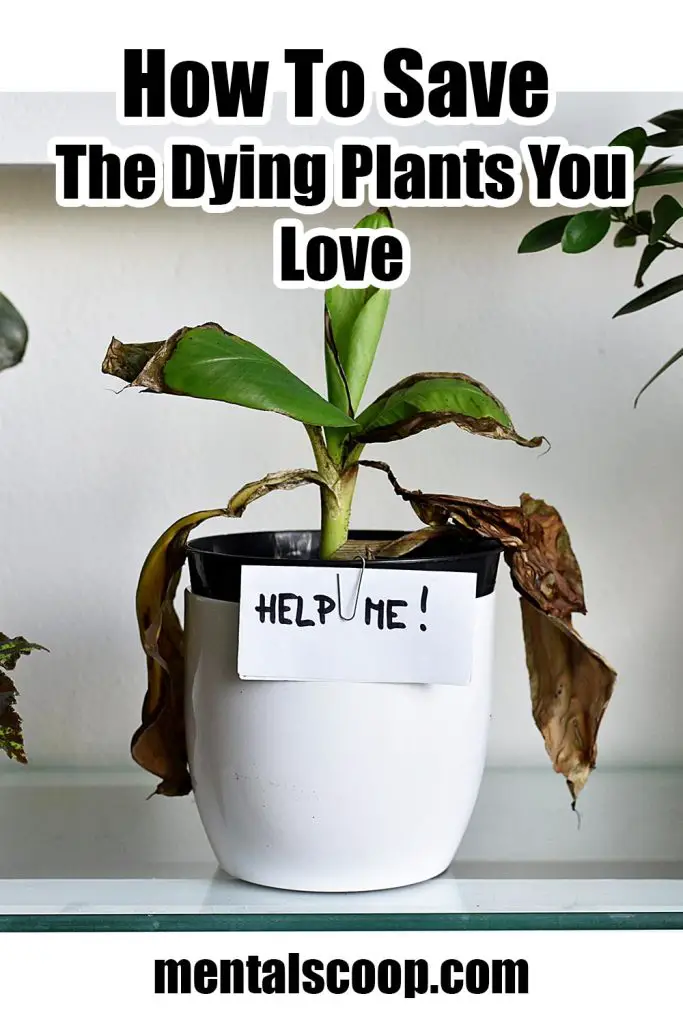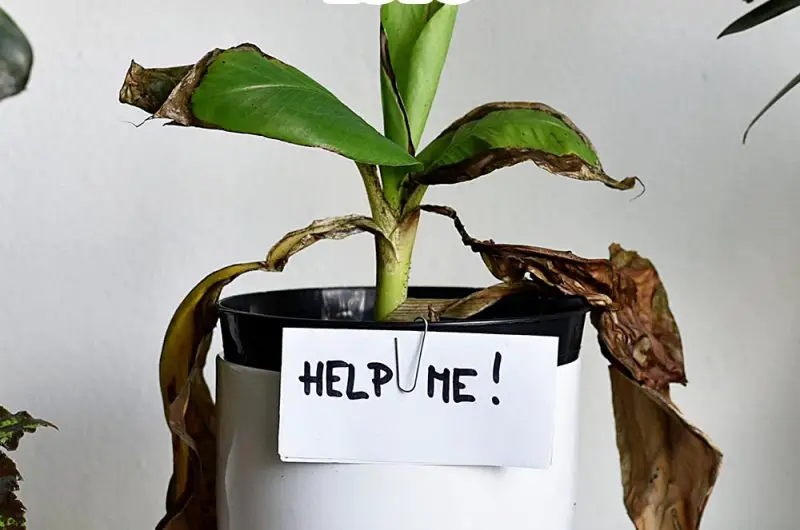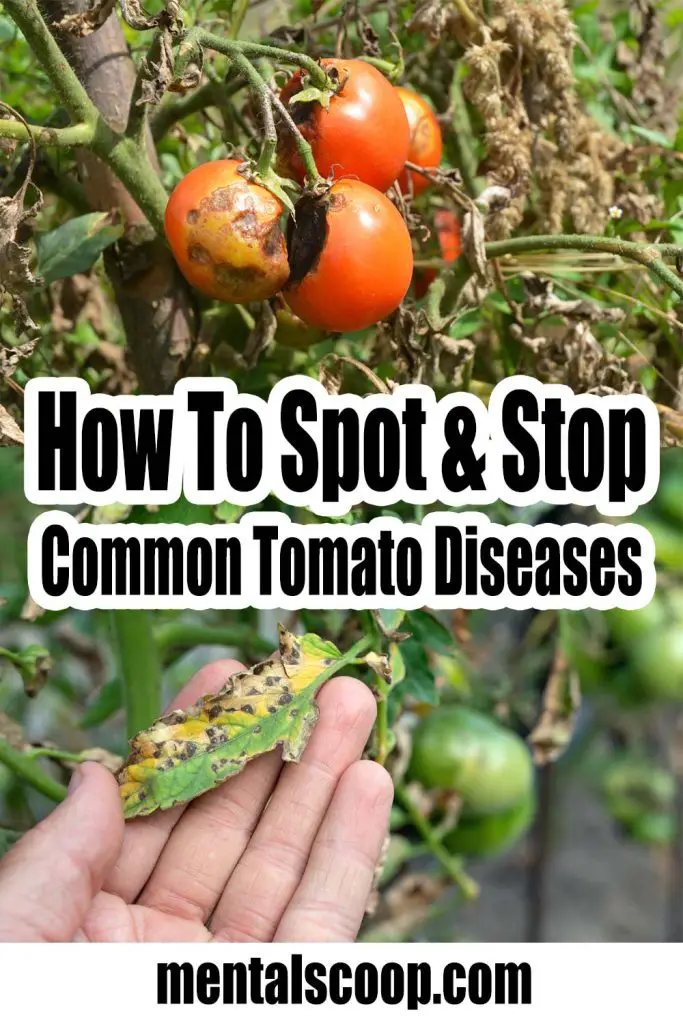How to save the dying plants you love

Plants are an essential part of our lives. They provide us with oxygen, purify the air, and enhance the beauty of our surroundings. However, sometimes plants can start to die due to various reasons such as lack of water, pests, or diseases. If you notice your plants starting to wither away, don’t give up on them just yet! There are many ways to save a dying plant, and in this article, we will discuss some of the most effective ones.
Identify the Problem
Identifying the problem is the crucial first step in saving a dying plant. It’s essential to pinpoint the cause of the plant’s decline to know how to address it effectively. Here are some common issues to look for when trying to identify the problem:
- Overwatering or Underwatering: One of the most common reasons for plant death is improper watering. Overwatering can lead to waterlogged soil, which can cause root rot and suffocate the plant. Underwatering, on the other hand, can cause the plant to dry out and die. Check the soil’s moisture level by sticking your finger into the soil about an inch deep. If the soil is dry, the plant needs watering.
- Poor Drainage: Poor drainage can lead to waterlogging and root rot. Check if the pot has drainage holes, and if the soil is compacted, consider repotting the plant in fresh soil.
- Pests and Diseases: Pests and diseases can quickly take over a plant, causing it to wither away. Look for signs of infestation or infection, such as yellowing leaves, black spots, or webbing on the plant.
- Lack of Light: Plants need light to grow and thrive. If your plant isn’t getting enough light, it may start to wilt or lose leaves. Check if the plant is in a location that receives adequate light or consider supplementing with artificial light.
- Fertilization: Over-fertilization or under-fertilization can cause a plant to die. If the plant isn’t receiving enough nutrients, it may show signs of yellowing leaves or stunted growth. Too much fertilizer can cause leaf burn and damage to the roots.
Water Properly
Watering is a crucial factor in keeping plants healthy and alive, and proper watering is essential in saving a dying plant. Improper watering, such as overwatering or underwatering, can lead to various problems that can cause the plant to wither away. Here are some tips on how to water your plants properly:
- Check the soil moisture: Before watering your plant, check the soil’s moisture level by sticking your finger into the soil about an inch deep. If the soil is dry, it’s time to water the plant.
- Water at the right time: Watering your plants at the right time is essential. Watering in the morning is ideal as it allows the plant to absorb the water and nutrients throughout the day. Avoid watering at night as this can lead to fungal growth.
- Water the soil, not the leaves: Watering the leaves can lead to fungal growth and damage. Instead, water the soil around the plant’s base.
- Water thoroughly: When watering your plant, water it thoroughly to ensure that the water reaches the plant’s roots. However, avoid overwatering, as this can lead to waterlogging and root rot.
- Consider the plant’s needs: Different plants have different watering needs. Some plants require more water than others, while some prefer to dry out between watering. Research your plant’s specific needs to ensure you’re providing the right amount of water.
By watering your plants properly, you can prevent various problems that can cause your plant to die. Remember to check the soil moisture, water at the right time, water the soil, not the leaves, water thoroughly, and consider the plant’s needs. With these tips, you can help revive a dying plant and keep it healthy and thriving.
Improve Drainage
Improving drainage is crucial in saving a dying plant as poor drainage can lead to waterlogging and root rot. Here are some tips on how to improve drainage:
- Choose the right pot: The pot you use can affect the plant’s drainage. Make sure the pot has drainage holes to allow excess water to drain out.
- Use the right soil: The type of soil you use can also affect drainage. Avoid using heavy, clay-like soil that doesn’t drain well. Instead, use well-draining soil, such as a potting mix that contains perlite or vermiculite.
- Add drainage material: Adding drainage material, such as gravel or sand, to the bottom of the pot can improve drainage. However, make sure not to add too much, as this can block the drainage holes.
- Elevate the pot: Elevating the pot by placing it on top of a saucer or pot feet can improve drainage by allowing excess water to flow out of the drainage holes.
- Repot the plant: If the plant’s soil is compacted, it may be time to repot the plant. Gently loosen the roots and replant it in fresh, well-draining soil.
Check for Pests and Diseases
Checking for pests and diseases is crucial in saving a dying plant as they can quickly take over and cause significant damage. Here are some tips on how to check for pests and diseases:
- Inspect the plant regularly: Make a habit of inspecting your plant regularly to catch any signs of pests or diseases early.
- Look for physical signs: Look for physical signs of pests and diseases, such as spots, discoloration, holes in leaves, webbing, or insects on the plant. Some pests, like spider mites, are tiny and hard to see, so look closely.
- Check the soil: Some pests, like fungus gnats, live in the soil and can cause damage to the plant’s roots. Check the soil for any signs of infestation or larvae.
- Research the plant’s needs: Some plants are more susceptible to pests and diseases than others. Research your plant’s specific needs and common issues to be aware of.
- Take action: If you notice any signs of pests or diseases, take action immediately. Remove any affected leaves, isolate the plant from others to prevent spreading, and use an appropriate treatment, such as insecticidal soap or neem oil, to get rid of pests.
Provide Adequate Light
Providing adequate light is crucial in saving a dying plant as it plays a vital role in photosynthesis, the process by which plants produce energy. Here are some tips on how to provide adequate light for your plant:
- Know your plant’s light requirements: Different plants require different levels of light. Some plants, like succulents, prefer bright, direct sunlight, while others, like ferns, prefer indirect or filtered light. Research your plant’s specific light requirements to ensure you’re providing the right amount of light.
- Position the plant correctly: Position the plant in the right spot to receive adequate light. Place it near a window or in a well-lit area of the room. If the plant isn’t getting enough light, consider moving it to a brighter location or using artificial light sources.
- Use artificial light: If your plant isn’t getting enough natural light, consider using artificial light sources, such as grow lights. LED grow lights are an excellent option as they provide a full spectrum of light and are energy-efficient.
- Avoid direct sunlight: While some plants require direct sunlight, others can be damaged by it. Avoid placing plants in direct sunlight for extended periods, especially during the hottest part of the day.
- Rotate the plant: Rotate the plant regularly to ensure all parts of the plant receive adequate light. This is particularly important for plants that have a tendency to lean towards the light source.
Fertilize Appropriately
Fertilizing appropriately is crucial in saving a dying plant as it provides essential nutrients that the plant needs to grow and thrive. Here are some tips on how to fertilize your plant appropriately:
- Know your plant’s nutrient requirements: Different plants have different nutrient requirements. Research your plant’s specific needs to ensure you’re providing the right amount of nutrients.
- Use the right type of fertilizer: There are many types of fertilizers available, such as organic and synthetic. Choose a fertilizer that meets your plant’s specific needs.
- Follow the instructions: Follow the instructions on the fertilizer package carefully, including the amount to use and how often to fertilize. Over-fertilizing can damage the plant and cause it to die.
- Apply fertilizer at the right time: Applying fertilizer at the right time is crucial in ensuring the plant gets the nutrients it needs. Fertilize during the growing season, usually from spring to fall. Avoid fertilizing during the dormant season, as the plant may not be able to absorb the nutrients.
- Use a slow-release fertilizer: Slow-release fertilizers release nutrients gradually over time, providing a consistent supply of nutrients to the plant. This is especially important for plants in containers, as nutrients can be quickly washed out of the soil.
Fertilizing appropriately is essential in keeping plants healthy and alive. Remember to know your plant’s nutrient requirements, use the right type of fertilizer, follow the instructions, apply fertilizer at the right time, and use a slow-release fertilizer. With these tips, you can help revive a dying plant and keep it healthy and thriving.
Saving a dying plant requires patience and effort, but it’s worth it to revive a beloved green friend. Remember to identify the problem, water properly, improve drainage, check for pests and diseases, provide adequate light, and fertilize appropriately. With these tips, you can help your dying plant recover and thrive once again.

More interesting articles you may be interested in reading:
How To Remove A Tree Stump Painlessly
10 Vital Home Maintenance Tasks You’ll Regret If You Forget
See How Much Propane Is Left In A Tank With No Gauge
Thanks for reading and be sure to share this info with your friends using the socia
Thanks for reading and be sure to share this info with your friends using the social share buttons below.
Talking about social stuff, consider liking our Facebook page to keep up to date with our articles. Check out our other articles for more mental scoops!



